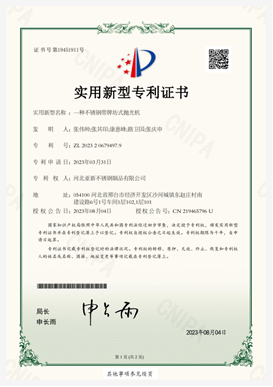non woven polyester felt
Exploring Non-Woven Polyester Felt Versatility and Applications
Non-woven polyester felt is one of the most versatile materials used in various industries today. Made from synthetic fibers, this felt offers a unique combination of durability, flexibility, and cost-effectiveness. Unlike traditional woven fabrics, non-woven felt is created through a process that entangles fibers together, resulting in a material that has no significant structure but retains strength and resilience. This article will explore the properties of non-woven polyester felt, its manufacturing process, and a variety of applications across different fields.
Properties of Non-Woven Polyester Felt
Non-woven polyester felt possesses several advantageous properties that make it a preferred choice for many applications. First and foremost, it is resistant to water and moisture, which makes it suitable for outdoor use and in environments where dampness is a concern. Its durability allows it to withstand wear and tear, and it has a remarkable ability to maintain its shape and integrity over time.
Another noteworthy property of non-woven polyester felt is its sound-absorbing capability. This characteristic is particularly valuable in the construction of acoustic panels and soundproofing materials, helping to create quieter indoor environments. Additionally, polyester felt can be treated with various additives, enhancing its resistance to flames, chemicals, and ultraviolet light, making it even more versatile across different uses.
Manufacturing Process
The production of non-woven polyester felt involves several key steps. Firstly, polyester fibers are sourced and then carded to separate and align the fibers. During this process, the fibers are blended and parallelized to ensure uniformity in the material. Subsequently, the fibers undergo entanglement through thermal bonding or needle punching methods.
In thermal bonding, heat is applied to the polyester fibers, causing them to fuse together, while needle punching employs barbed needles to mechanically entangle the fibers. Both methods result in a fabric-like material that can be cut, shaped, and finished according to the specific requirements of the end application. The final product is a lightweight, flexible, and highly durable felt that can be easily manipulated for various uses.
non woven polyester felt

Applications of Non-Woven Polyester Felt
The applications of non-woven polyester felt are extensive and diverse. In the textile industry, it serves as a backing material for carpets, providing stability and comfort underfoot. Its softness and cushioning properties also allow it to be used in various upholstery applications, including furniture and automotive interiors.
In the realm of crafts and DIY projects, non-woven polyester felt is a popular choice among hobbyists and artisans. Its availability in a wide range of colors and thicknesses makes it ideal for creating decorative items, costumes, and educational tools. The ease of cutting and shaping this felt allows for creativity to flourish, making it a beloved material in arts and crafts.
Additionally, non-woven polyester felt is widely used in the filtration industry. Its ability to trap particles while allowing air or liquids to pass through makes it an ideal choice for air filtration systems and liquid filtration applications in various sectors including healthcare, automotive, and environmental services.
In the construction industry, non-woven polyester felt is utilized in insulation applications and as a vapor barrier. Its water-resistant properties provide added protection against moisture intrusion, while its sound-absorbing capabilities contribute to enhanced comfort within buildings.
Conclusion
In conclusion, non-woven polyester felt is a remarkable material that has carved its niche across multiple industries. Its unique properties, combined with its adaptability and cost-effectiveness, make it an invaluable resource. Whether in textiles, crafts, filtration, or construction, the versatility of non-woven polyester felt continues to pave the way for innovative applications, proving its worth in today’s material landscape. As technology advances, we can expect even more exciting developments in the uses and efficiencies of non-woven polyester felt.
-
What Makes Felt a Great Choice?NewsNov.19,2024
-
Total Mixed Ration (TMR) Feed for CattleNewsNov.19,2024
-
The Ultimate Guide for Felt Polishing WheelsNewsNov.19,2024
-
Industrial Felt for Various ApplicationsNewsNov.19,2024
-
Felt Makeup Bags and Inserts BagsNewsNov.19,2024
-
Choosing the Right Hotel TowelsNewsNov.19,2024
-
Your Go-To Guide For Affordable Wholesale Wool FeltsNewsOct.31,2024







